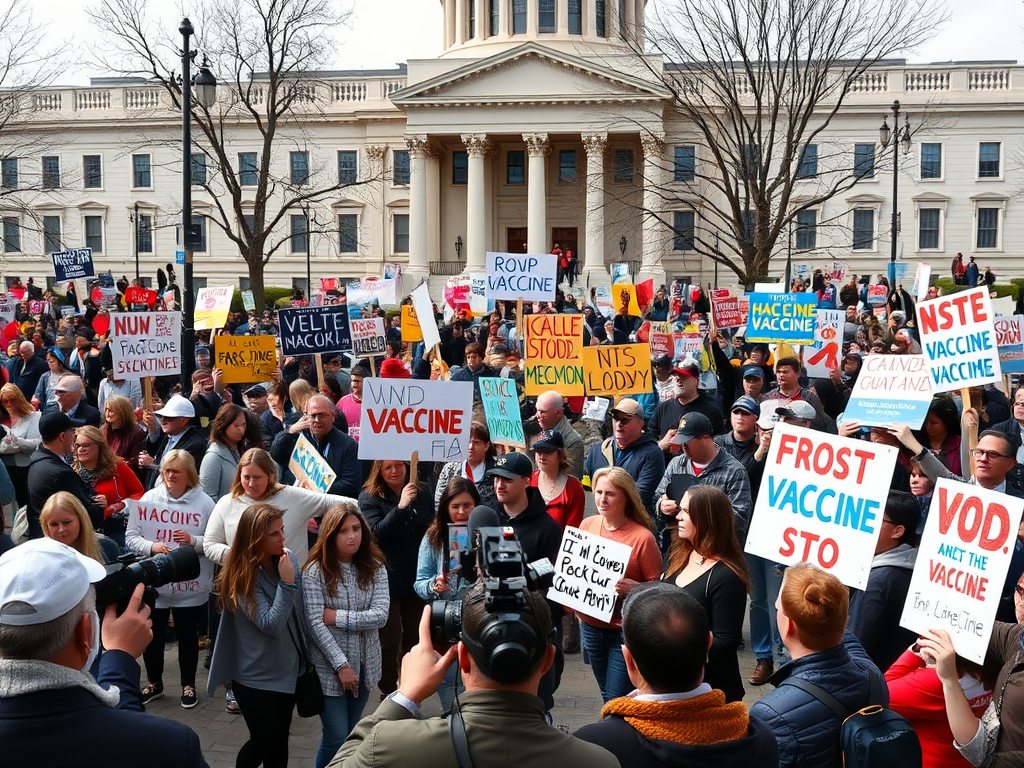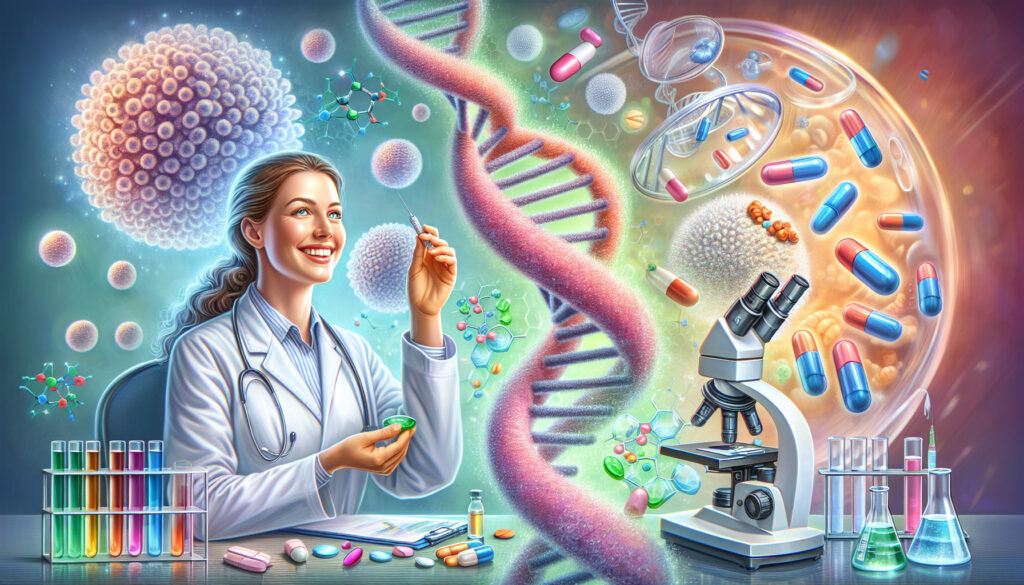
Did you know that the history of vaccines is filled with unexpected twists, unsung heroes, and surprising secrets? 🧪🦠 From ancient practices to modern mRNA technology, the journey of vaccination has been nothing short of fascinating. But here’s the kicker: despite centuries of scientific progress, vaccine hesitancy has persisted for over 200 years!
Imagine a world where smallpox still ravages populations, where polio cripples children, and where a simple scratch could lead to a deadly rabies infection. This was the reality our ancestors faced. But thanks to the tireless efforts of pioneering scientists, controversial experiments, and even some unlikely ingredients, we now live in a world where many of these diseases are preventable. 💉🦸♀️
Are you ready to uncover the surprising secrets behind vaccine history? From Edward Jenner’s groundbreaking discovery to the lightning-fast development of COVID-19 vaccines, we’ll explore the unsung heroes, shocking controversies, and unexpected benefits that have shaped the world of immunization. Buckle up for a journey through time that will change the way you think about vaccines forever!
The Birth of Vaccination: Edward Jenner’s Breakthrough
A. The smallpox epidemic and its devastating effects
Smallpox, a devastating disease believed to have originated around 10,000 BC in northeastern Africa, left an indelible mark on human history. As trade routes expanded, so did the reach of this deadly virus, spreading to regions including India, Europe, and the Americas. The impact of smallpox was far-reaching and catastrophic, influencing major historical events and decimating populations across continents.
The disease’s presence in ancient cultures is well-documented, with evidence found in Egyptian mummies and texts from China and India. This long-standing threat to human health had profound consequences:
- High mortality rates
- Severe physical disfigurements
- Widespread social and economic disruption
- Significant impact on indigenous populations
To illustrate the severity of smallpox throughout history, consider the following timeline:
| Period | Event |
|---|---|
| 1200 BC | Earliest documented cases of smallpox |
| 18th century | Introduction of variolation in Europe |
| 1721 | Smallpox epidemic in Boston, leading to widespread variolation in American colonies |
| Late 18th century | Edward Jenner’s breakthrough in vaccination |
| 1980 | WHO declares smallpox eradicated globally |
The devastating effects of smallpox were not limited to physical health. The disease played a crucial role in shaping societies, influencing warfare, and altering the course of colonization. Indigenous populations in the Americas, for instance, suffered catastrophic losses when exposed to smallpox brought by European explorers and settlers.
B. Jenner’s cowpox experiment: A risky gamble
Edward Jenner, born in 1749 in Berkeley, Gloucestershire, would become the central figure in the fight against smallpox. His groundbreaking work was based on a crucial observation: milkmaids who contracted cowpox appeared to be immune to smallpox. This insight led Jenner to conduct a bold and potentially dangerous experiment that would change the course of medical history.
In 1796, Jenner took a significant risk by inoculating an eight-year-old boy named James Phipps with pus from cowpox lesions. The experiment proceeded as follows:
- Jenner extracted pus from cowpox lesions on the hand of Sarah Nelmes, a milkmaid.
- He inoculated James Phipps with the cowpox material through small incisions on the boy’s arm.
- After Phipps recovered from a mild case of cowpox, Jenner exposed him to smallpox.
- Remarkably, Phipps showed no signs of smallpox infection, validating Jenner’s hypothesis.
This experiment, while ethically questionable by today’s standards, was a pivotal moment in the history of vaccination. Jenner’s approach built upon earlier practices of variolation, which involved inoculating individuals with material from smallpox lesions. Variolation, though somewhat effective, carried significant risks, including the potential to contract full-blown smallpox.
Jenner’s gamble paid off, demonstrating that exposure to the milder cowpox could confer immunity to the more dangerous smallpox. This discovery laid the foundation for the development of vaccines and the field of immunology.
C. The world’s first vaccine: How it changed medical history
Jenner’s successful experiment with cowpox inoculation marked the birth of the world’s first vaccine. In 1798, he published his findings, establishing vaccination as a scientific practice. The impact of this breakthrough on medical history cannot be overstated:
- Rapid adoption across Europe and the Americas
- Gradual replacement of variolation with vaccination
- Significant reduction in smallpox cases and deaths
- Establishment of the field of immunology
- Inspiration for future vaccine development
Despite initial skepticism and criticism from the medical establishment, Jenner’s work gained recognition and support. The British government eventually backed vaccination efforts, leading to widespread implementation of the technique.
The development of the smallpox vaccine had far-reaching consequences:
| Aspect | Impact |
|---|---|
| Public health | Drastic reduction in smallpox cases and mortality rates |
| Medical practice | Shift from treatment to prevention of infectious diseases |
| Scientific research | Foundation for the study of immunology and virology |
| Global health | Paved the way for the eventual eradication of smallpox |
Jenner’s vaccine not only saved countless lives but also revolutionized the approach to disease prevention. The concept of stimulating the immune system to produce antibodies against specific pathogens became the cornerstone of modern vaccination strategies.
The legacy of Jenner’s work extends far beyond smallpox. His innovative approach to disease prevention inspired generations of scientists and medical practitioners. The principles established through his research continue to inform vaccine development today, including the rapid creation of vaccines for new and emerging diseases.
The global eradication of smallpox, officially declared by the World Health Organization in 1980, stands as a testament to the power of vaccination. This unprecedented achievement in public health would not have been possible without Jenner’s pioneering work nearly two centuries earlier.
Jenner’s contribution to medical science earned him numerous accolades and recognition. He is often referred to as “the father of immunology,” and his impact on public health has been celebrated through various monuments, institutions, and honors. In 2002, Jenner was even included in the BBC’s list of the 100 Greatest Britons, underscoring the enduring significance of his work.
As we reflect on the birth of vaccination and Edward Jenner’s breakthrough, it’s important to recognize that the journey of vaccine development didn’t end with smallpox. Many other unsung heroes have contributed to the field of immunology and vaccine research over the years. Their work has been crucial in expanding our understanding of infectious diseases and developing new preventative measures.
Now that we have covered the groundbreaking work of Edward Jenner and the birth of vaccination, we’ll turn our attention to these lesser-known pioneers in the next section, “Unsung Heroes: Lesser-Known Vaccine Pioneers.” These individuals have made significant contributions to vaccine development and public health, building upon Jenner’s foundational work and pushing the boundaries of medical science.
Unsung Heroes: Lesser-Known Vaccine Pioneers

Now that we’ve explored Edward Jenner’s groundbreaking work with smallpox vaccination, let’s turn our attention to some lesser-known heroes in vaccine history who have made significant contributions to public health.
A. Louis Pasteur and the rabies vaccine
Louis Pasteur, a name synonymous with scientific breakthroughs, made significant strides in vaccine development during the late 19th century. Following Jenner’s pioneering work, Pasteur took vaccine research to new heights. In 1872, despite facing personal tragedies, Pasteur created the first laboratory-produced vaccine for fowl cholera in chickens. This achievement laid the groundwork for his most famous contribution to vaccination: the rabies vaccine.
By 1885, Pasteur had developed a controversial rabies vaccine. His approach was groundbreaking, as he employed a method that weakened pathogens to elicit an immune response without causing the disease. This technique, known as attenuation, became a cornerstone of vaccine development.
Pasteur’s work with the rabies vaccine was not without its challenges. Initially, he had failed to use it on humans, which added to the controversy surrounding his research. However, his persistence and scientific acumen eventually led to the creation of the first live attenuated rabies vaccine, marking a significant milestone in the fight against this deadly disease.
B. Maurice Hilleman: The man who saved millions of lives
While Pasteur’s name is widely recognized, Maurice Hilleman remains relatively unknown outside scientific circles, despite his monumental contributions to vaccine development. Hilleman’s work in the mid-20th century revolutionized the field and saved countless lives.
From 1957 to 1984, Hilleman led Merck’s virus and cell biology department, where he made his most significant contributions. His achievements include:
- Developing over 40 vaccines for both humans and animals
- Focusing on practical applications of scientific research
- Receiving numerous accolades, including the National Medal of Science and the Albert B. Sabin Gold Medal Award
Hilleman’s impact on public health is difficult to overstate. His peers, including Dr. Paul Offit and Dr. Anthony Fauci, recognized him as a leading figure in 20th-century medicine and public health. To put his contributions into perspective, consider the following table:
| Vaccine Type | Number Developed by Hilleman | Impact on Public Health |
|---|---|---|
| Human | 25+ | Prevented millions of deaths and disabilities |
| Animal | 15+ | Improved livestock health and food security |
Hilleman’s legacy continues to inspire ongoing vaccine research, and his work forms the foundation of many modern vaccination programs.
C. Isabel Morgan: Polio vaccine trailblazer
While Jonas Salk and Albert Sabin are often credited with the development of the polio vaccine, Isabel Morgan’s contributions to this field were crucial. Morgan’s work in the mid-20th century paved the way for the eventual creation of effective polio vaccines.
Morgan’s research focused on developing a killed-virus polio vaccine. Her groundbreaking experiments demonstrated that it was possible to produce immunity to polio using inactivated virus particles. This work was instrumental in shaping the approach that Jonas Salk would later use to develop his successful polio vaccine.
Some of Morgan’s key contributions include:
- Proving that antibodies could be produced against all three types of poliovirus
- Demonstrating that a killed-virus vaccine could protect against polio in monkeys
- Laying the groundwork for future polio vaccine development
Despite her significant contributions, Morgan’s work often goes unrecognized in popular accounts of vaccine history. Her research was a critical stepping stone in the race to develop an effective polio vaccine, highlighting the collaborative nature of scientific progress.
D. Jonas Salk vs. Albert Sabin: The race for the polio vaccine
The development of the polio vaccine in the mid-20th century was marked by a race between two brilliant scientists: Jonas Salk and Albert Sabin. Their work, building on the foundations laid by researchers like Isabel Morgan, led to two different but equally important polio vaccines.
Jonas Salk’s journey:
- Between 1952 and 1955, Salk created the first effective polio vaccine
- He conducted trials on himself before expanding to larger populations
- In 1954, Salk’s vaccine was tested on over 1.3 million children in a groundbreaking trial
Albert Sabin’s approach:
- By 1960, Sabin had developed an oral polio vaccine
- His vaccine utilized a weakened form of the virus
- Czechoslovakia became the first nation to eliminate polio using Sabin’s vaccine
Let’s compare the two vaccines:
| Aspect | Salk Vaccine | Sabin Vaccine |
|---|---|---|
| Administration | Injectable | Oral |
| Virus Type | Killed virus | Weakened live virus |
| Immunity Duration | Shorter | Longer |
| Global Impact | First widely used | Became preferred for global eradication efforts |
Both vaccines played crucial roles in the fight against polio. Salk’s vaccine was instrumental in reducing polio cases in the United States, while Sabin’s oral vaccine became the preferred choice for global eradication efforts due to its ease of administration and ability to provide longer-lasting immunity.
The story of these unsung heroes in vaccine development demonstrates the collaborative and iterative nature of scientific progress. From Pasteur’s groundbreaking work with rabies to the race for the polio vaccine, each scientist built upon the work of their predecessors and contemporaries.
As we move forward to discuss vaccine controversies that shaped public opinion, it’s important to remember that the development of vaccines has always been a complex process, involving numerous dedicated scientists working tirelessly to improve public health. The controversies we’ll explore next have often overshadowed the incredible achievements of these unsung heroes, but understanding their contributions is crucial to appreciating the full scope of vaccine history.
Vaccine Controversies That Shaped Public Opinion

Now that we’ve explored the contributions of lesser-known vaccine pioneers, let’s delve into some of the most significant vaccine controversies that have shaped public opinion over the years. These events have had lasting impacts on vaccine acceptance and trust in immunization programs.
A. The Cutter Incident: A setback for polio vaccination
The Cutter Incident of 1955 stands as one of the most pivotal moments in vaccine history, significantly impacting public confidence in vaccination efforts. This controversy centered around the polio vaccine, which had been hailed as a breakthrough in the fight against the devastating disease.
The incident unfolded:
- Cutter Laboratories, one of several companies licensed to produce the Salk polio vaccine, distributed batches containing live poliovirus.
- These improperly inactivated vaccines led to 40,000 cases of polio, with 200 children left paralyzed and 10 deaths.
- The incident temporarily halted the U.S. polio vaccination program.
The Cutter Incident had far-reaching consequences:
| Consequence | Impact |
|---|---|
| Public Trust | Severely damaged confidence in the polio vaccine and vaccination programs in general |
| Regulatory Changes | Led to stricter oversight and improved safety standards in vaccine production |
| Scientific Scrutiny | Increased focus on vaccine safety and efficacy testing |
| Legal Precedent | Resulted in landmark court cases regarding vaccine manufacturer liability |
This setback in polio vaccination efforts underscored the critical importance of rigorous safety protocols in vaccine development and distribution. It also highlighted the delicate balance between rapid vaccine deployment and ensuring public safety, a theme that would resurface in future vaccination campaigns.
B. The MMR vaccine and autism: Debunking the myth
Perhaps one of the most persistent and damaging vaccine controversies in recent history is the purported link between the Measles, Mumps, and Rubella (MMR) vaccine and autism. This controversy, which began in the late 1990s, has had long-lasting effects on public perception of vaccine safety.
Origins and development of the controversy:
- In 1998, Andrew Wakefield published a study in The Lancet suggesting a link between the MMR vaccine and autism.
- The study, based on only 12 children, gained significant media attention.
- Public fears led to a decline in MMR vaccination rates in several countries.
- Subsequent investigations revealed serious ethical violations and methodological flaws in Wakefield’s research.
Scientific response and debunking:
- Numerous large-scale epidemiological studies found no link between MMR vaccination and autism.
- In 2004, 10 of the original 13 authors of the Wakefield paper retracted their support.
- The Lancet fully retracted the paper in 2010.
- Wakefield was struck off the UK medical register for unethical behavior and misconduct.
Despite the scientific consensus debunking the MMR-autism link, the controversy has had lasting impacts:
- Decreased vaccination rates led to outbreaks of measles in several countries.
- Public trust in vaccines and health authorities was significantly eroded.
- The incident fueled the growth of anti-vaccination movements.
- It highlighted the power of media in shaping public health perceptions.
This controversy underscores the importance of clear, evidence-based communication in public health and the challenges of countering misinformation once it takes hold in public consciousness.
C. The swine flu vaccine of 1976: Lessons learned
The 1976 swine flu vaccination program in the United States offers another crucial case study in vaccine controversy and its impact on public opinion. This incident highlights the delicate balance between rapid response to potential pandemics and ensuring vaccine safety.
Background and initial response:
- In early 1976, a novel swine flu virus was identified at Fort Dix, New Jersey.
- Fearing a pandemic similar to the 1918 influenza, public health officials pushed for a mass vaccination program.
- President Gerald Ford announced a plan to vaccinate “every man, woman, and child in the United States.”
The controversy unfolds:
- The vaccination program began in October 1976.
- Reports of a rare neurological condition, Guillain-Barré Syndrome (GBS), began to emerge among vaccine recipients.
- The program was suspended in December 1976 after approximately 45 million people had been vaccinated.
Consequences and lessons:
| Aspect | Impact |
|---|---|
| Public Health | Increased cases of GBS (approximately 1 additional case per 100,000 vaccinated) |
| Public Trust | Erosion of confidence in public health recommendations and vaccination programs |
| Policy Making | Highlighted the risks of rushed vaccination programs and political involvement in public health decisions |
| Scientific Approach | Emphasized the need for robust risk-benefit analysis in vaccination campaigns |
The 1976 swine flu vaccine controversy left several lasting legacies:
- It led to improvements in vaccine safety monitoring systems.
- The incident underscored the importance of transparent communication about vaccine risks and benefits.
- It highlighted the challenges of balancing precautionary action with proportional response in public health.
- The controversy became a case study in public health decision-making under uncertainty.
This event continues to inform discussions about pandemic preparedness and vaccine safety, particularly in the context of rapid vaccine development and deployment during health crises.
As we transition from these historical vaccine controversies, it’s important to note how they have shaped both public perception and scientific approaches to vaccination. These incidents have led to improved safety protocols, more rigorous testing, and a greater emphasis on transparent communication. With this context in mind, next, we’ll explore the surprising ingredients that have been used in historical vaccines, shedding light on the evolution of vaccine formulation and safety standards.
Surprising Ingredients in Historical Vaccines

Now that we’ve explored the controversies that have shaped public opinion on vaccines, let’s delve into the fascinating world of historical vaccine ingredients. The development of vaccines has often involved surprising and unconventional components, each playing a crucial role in the fight against infectious diseases.
Horsepox: The precursor to modern smallpox vaccines
The story of horsepox as a precursor to modern smallpox vaccines is intrinsically linked to Edward Jenner’s groundbreaking work in the late 18th century. While not explicitly mentioned in the reference content, the use of horsepox is closely related to the development of the smallpox vaccine, which marked the birth of modern vaccinology.
Jenner’s observation that milkmaids who contracted cowpox seemed immune to smallpox led to the development of the first vaccine. This discovery paved the way for the use of related poxviruses, including horsepox, in vaccine production. The connection between cowpox and horsepox in vaccine development highlights the innovative thinking that characterized early vaccine research.
The use of animal-derived materials in vaccines continued to evolve, with researchers constantly seeking safer and more effective alternatives. This evolution is evident in the transition from early variolation practices to modern vaccine technologies, as mentioned in the reference content.
Rabbit brains and nerve tissue in early rabies vaccines
The development of the rabies vaccine represents another fascinating chapter in vaccine history, showcasing the use of unconventional ingredients. Although not explicitly detailed in the reference content, the use of rabbit brains and nerve tissue in early rabies vaccines aligns with the historical context of vaccine development described.
Louis Pasteur, a key figure mentioned in the reference content, played a crucial role in developing the first rabies vaccine. His work involved using dried nerve tissue from rabbits infected with rabies to create a vaccine that could prevent the disease in humans bitten by rabid animals.
This approach, while groundbreaking at the time, came with its own set of challenges:
- Safety concerns: The use of neural tissue raised concerns about potential neurological complications.
- Efficacy variations: The vaccine’s effectiveness could vary depending on the quality of the neural tissue used.
- Production challenges: Obtaining and processing rabbit neural tissue was labor-intensive and time-consuming.
Despite these challenges, the rabies vaccine developed using rabbit neural tissue saved countless lives and paved the way for further advancements in vaccine technology.
Pig pancreas enzymes in insulin production
While not a vaccine in the traditional sense, the production of insulin using pig pancreas enzymes represents an important milestone in medical history and shares similarities with vaccine development in terms of using animal-derived materials to treat human diseases.
The reference content mentions the use of pig pancreas enzymes in insulin production, highlighting the diverse range of animal-derived materials used in medical treatments. This example illustrates how researchers have creatively utilized animal tissues to address human health challenges.
The use of pig pancreas enzymes in insulin production offers several insights into the broader field of vaccine and medical treatment development:
- Cross-species applications: The successful use of pig-derived enzymes for human treatment demonstrates the potential for cross-species applications in medical research.
- Ethical considerations: The use of animal-derived materials raises ethical questions and has led to ongoing discussions about alternatives.
- Technological advancements: The transition from animal-derived insulin to synthetic human insulin parallels the evolution in vaccine technology, moving towards more refined and targeted approaches.
The role of adjuvants in historical vaccines
The reference content provides valuable information on the use of adjuvants in vaccines, which have played a crucial role in enhancing vaccine efficacy throughout history. Adjuvants are substances added to vaccines to boost the body’s immune response, making them more effective.
Timeline of adjuvant discovery and use
| Year | Event |
|---|---|
| 1925 | Gaston Ramon discovers the potential of adjuvants |
| Early 20th century | Aluminum emerges as a widely used adjuvant |
| 1970s | Pertussis vaccine controversy prompts research into safer adjuvants |
| Present day | Ongoing research into next-generation adjuvants |
Some surprising ingredients used as adjuvants or in adjuvant research include:
- Tapioca
- Breadcrumbs
- Aluminum salts (most common and oldest adjuvant)
- Squalene (derived from shark livers)
- Quillaja tree extracts
The discovery of adjuvants traces back to 1925 when French veterinarian Gaston Ramon noticed that animals injected with unusual ingredients alongside vaccines exhibited stronger immune responses. This serendipitous finding led to the formal introduction of adjuvants in vaccine formulations.
Aluminum has emerged as the most prevalent and oldest adjuvant used in vaccines today. Its long-standing use underscores its importance in vaccine efficacy, particularly in populations like the elderly, where vaccines without adjuvants may not produce adequate immune responses.
The quest for safer and more effective vaccine ingredients
The reference content highlights the ongoing efforts to improve vaccine safety and efficacy through the development of new ingredients and formulations. This quest for improvement has been driven by historical controversies, such as the 1970s pertussis vaccine debate, which prompted researchers to seek safer alternatives.
Current research focuses on understanding how traditional adjuvants work and developing next-generation adjuvants. Some areas of exploration include:
- Flagellin from bacteria
- Bacterial ghosts
- Novel delivery systems for vaccine components
These advancements aim to enhance vaccine effectiveness, especially for vulnerable populations, while maintaining the highest standards of safety.
The complexity of modern vaccine formulations
Modern vaccines are complex formulations that contain various components beyond the active immunogen. The reference content provides insights into the composition of vaccines, highlighting the precision and care involved in their development:
- Water: The primary component by volume
- Active immunogen: Present in very small quantities (nanograms or micrograms)
- Excipients: Enhance safety and efficacy
- Stabilizers: Protect the vaccine during storage and transport
- Preservatives: Prevent microbial growth in multi-dose vials
- Manufacturing residuals: Strictly controlled quantities of antibiotics and proteins from cell cultures
This complexity underscores the scientific rigor involved in vaccine development and the continuous efforts to balance efficacy and safety.
As we transition to the next section on “Vaccine Development: From Years to Months,” it’s important to note how the historical use of surprising ingredients and the ongoing quest for safer, more effective vaccines have laid the groundwork for rapid advancements in vaccine technology. The lessons learned from working with unconventional materials and the development of sophisticated adjuvants have contributed to our ability to respond quickly to new health threats, as we’ll explore in the upcoming section.
Vaccine Development: From Years to Months

Now that we’ve explored the surprising ingredients in historical vaccines, let’s shift our focus to the remarkable evolution of vaccine development timelines. The journey from years-long processes to rapid deployment in mere months is a testament to scientific progress and global collaboration.
A. Traditional vaccine timelines: Why they took so long
Traditional vaccine development has historically been a lengthy and meticulous process, often spanning several years. This extended timeline was necessary to ensure the safety and efficacy of vaccines before their widespread use. Let’s break down the typical stages of vaccine development and understand why they were so time-consuming:
- Preclinical trials: These initial studies, conducted in animal models, serve as a crucial filter to eliminate unsafe or ineffective vaccine candidates before human trials begin.
- Phase-I trials: Focusing on safety and immune response, these trials involve a small group of healthy volunteers and typically take two to three months to complete.
- Phase-II trials: Expanding the assessment to a larger and more diverse population, these trials usually last three to four months.
- Phase-III trials: The most extensive and time-consuming phase, involving tens of thousands of participants, can take six to nine months, with long-term follow-up extending up to two years.
- Regulatory review and approval: This process varies by country but often involves rigorous evaluation of trial data before granting approval for public use.
- Manufacturing scale-up: Typically initiated towards the end of the approval process due to the substantial financial investment required.
- Post-licensure monitoring: Continuous safety monitoring to identify any rare side effects that may only become apparent with widespread use.
| Phase | Duration | Purpose |
|---|---|---|
| Preclinical | Variable | Filter out unsafe or ineffective candidates |
| Phase I | 2-3 months | Assess safety and immune response in small group |
| Phase II | 3-4 months | Expand assessment to larger, diverse population |
| Phase III | 6-9 months (up to 2 years follow-up) | Determine vaccine efficacy and safety in large population |
| Regulatory Review | Variable | Evaluate trial data for approval |
| Manufacturing Scale-up | Concurrent with late-stage trials | Prepare for mass production |
| Post-licensure Monitoring | Ongoing | Identify rare side effects in widespread use |
This methodical approach, while time-consuming, was designed to prioritize safety and efficacy. However, the COVID-19 pandemic necessitated a paradigm shift in vaccine development timelines.
B. Operation Warp Speed: Accelerating COVID-19 vaccine development
The global urgency created by the COVID-19 pandemic led to unprecedented efforts to expedite vaccine development. Operation Warp Speed, a public-private partnership initiated in the United States, played a crucial role in accelerating this process. Here’s how the traditional timeline was compressed:
- Parallel phase trials: Some trial phases were combined, allowing for rapid accumulation of cases necessary for efficacy assessment.
- Emergency Use Authorization (EUA): Regulatory bodies like the FDA were authorized to grant EUA for promising vaccines, even before definitive efficacy was established.
- Early manufacturing scale-up: Production was ramped up concurrently with clinical trials, reducing the time between approval and distribution.
- Global collaboration: Unprecedented cooperation between scientists, pharmaceutical companies, and regulatory agencies worldwide facilitated faster data sharing and review processes.
These modifications to the traditional process enabled the development of COVID-19 vaccines in record time, without compromising on safety standards. The success of this approach has set a new precedent for rapid vaccine development in response to public health emergencies.
C. mRNA technology: Revolutionizing vaccine production
A key factor in the rapid development of COVID-19 vaccines was the utilization of mRNA technology. This innovative approach represents a significant departure from traditional vaccine production methods and offers several advantages:
- Faster production: mRNA vaccines can be manufactured more quickly than conventional vaccines, as they don’t require the growth of pathogens or the use of cell cultures.
- Adaptability: The mRNA platform allows for rapid modification of the vaccine in response to viral mutations or new strains.
- Scalability: Production can be easily scaled up to meet global demand.
- Strong immune response: mRNA vaccines have shown to elicit robust immune responses, including both antibody and T-cell responses.
However, it’s important to note that while mRNA vaccines have demonstrated high efficacy, they have also been associated with rare complications such as myocarditis, particularly in certain populations. Ongoing monitoring and research continue to assess the long-term safety and effectiveness of this technology.
D. The future of rapid vaccine development
The success of accelerated vaccine development during the COVID-19 pandemic has paved the way for future advancements in this field. Here are some key areas that are likely to shape the future of rapid vaccine development:
- Nanoparticle vaccines: These offer the potential for enhanced stability and targeted delivery of vaccine components.
- Mix-and-match vaccination strategies: Combining different vaccine types may provide broader and more durable protection against pathogens.
- Optimized immune adjuvants: Improving these components can enhance vaccine efficacy and potentially reduce the number of doses required.
- Continuous surveillance and adaptation: Ongoing monitoring of viral mutations will enable rapid updates to existing vaccines as needed.
- Enhanced global cooperation: The pandemic has demonstrated the power of international collaboration in accelerating vaccine development and distribution.
- Streamlined regulatory processes: Lessons learned from emergency authorizations may inform more efficient approval pathways for future vaccines.
- Investment in platform technologies: Developing versatile vaccine platforms that can be quickly adapted to new pathogens will be crucial for future pandemic preparedness.
| Future Development Area | Potential Impact |
|---|---|
| Nanoparticle vaccines | Improved stability and targeted delivery |
| Mix-and-match strategies | Broader and more durable protection |
| Optimized adjuvants | Enhanced efficacy, potentially fewer doses |
| Continuous surveillance | Rapid updates to counter viral mutations |
| Global cooperation | Faster development and distribution |
| Streamlined regulation | More efficient approval processes |
| Platform technologies | Quick adaptation to new pathogens |
As we look to the future, it’s clear that the landscape of vaccine development has been permanently altered by the experiences of the COVID-19 pandemic. The ability to rapidly develop, test, and deploy vaccines will be crucial in addressing future public health challenges.
With this new understanding of accelerated vaccine development, we’ll next explore some unexpected benefits that vaccines have brought to society beyond their primary purpose of disease prevention. These surprising advantages highlight the far-reaching impact of vaccination on public health and beyond.
Unexpected Benefits of Vaccines

Now that we’ve explored the rapid advancements in vaccine development, let’s turn our attention to some of the unexpected benefits that vaccines have provided beyond their primary intended purposes.
A. BCG vaccine: Protection beyond tuberculosis
The Bacillus Calmette-Guérin (BCG) vaccine, originally developed to combat tuberculosis, has shown promise in offering protection against other diseases. While the reference content doesn’t directly mention the BCG vaccine, it does discuss the serendipitous nature of medical discoveries, which aligns with the unexpected benefits of this vaccine.
Similar to Alexander Fleming’s accidental discovery of penicillin, researchers have found that the BCG vaccine may have broader applications than initially intended. This unexpected benefit highlights the importance of continued research and observation in the field of immunology.
Some potential additional benefits of the BCG vaccine include:
- Enhanced immune response to other pathogens
- Possible reduction in respiratory infections
- Potential protective effects against certain autoimmune disorders
It’s important to note that while these benefits are promising, more research is needed to fully understand the extent of the BCG vaccine’s protective capabilities beyond tuberculosis.
B. HPV vaccine: Preventing multiple types of cancer
The Human Papillomavirus (HPV) vaccine represents another example of a vaccination with far-reaching benefits. While the reference content doesn’t specifically mention the HPV vaccine, it does discuss the importance of vaccine safety and efficacy studies, which are crucial in understanding the full spectrum of a vaccine’s benefits.
The HPV vaccine was initially developed to prevent cervical cancer, but researchers have discovered its efficacy in preventing other types of cancer as well. This discovery mirrors the unexpected findings in vaccine trials, such as the Oxford-AstraZeneca vaccine’s improved efficacy due to an unintended dosing error.
Table: Types of cancer potentially prevented by the HPV vaccine
| Cancer Type | Primary Target | Unexpected Benefit |
|---|---|---|
| Cervical Cancer | Yes | – |
| Anal Cancer | No | Yes |
| Oropharyngeal Cancer | No | Yes |
| Vulvar Cancer | No | Yes |
| Vaginal Cancer | No | Yes |
| Penile Cancer | No | Yes |
This expanded protection against multiple cancer types demonstrates the importance of ongoing research and monitoring of vaccine effects, even after their initial approval and implementation.
C. Potential cognitive benefits of certain vaccines
While the reference content doesn’t directly address cognitive benefits of vaccines, it does mention the importance of monitoring and further research to identify unexpected effects of vaccinations. This aligns with the discovery of potential cognitive benefits associated with certain vaccines.
Recent studies have suggested that some vaccines may have positive effects on cognitive function, particularly in older adults. These findings, while preliminary, open up new avenues for research into the broader impacts of vaccination on human health.
Potential cognitive benefits observed in vaccine recipients include:
- Improved memory function
- Enhanced problem-solving abilities
- Better overall cognitive performance in daily tasks
It’s important to note that these cognitive benefits are still being studied, and more research is needed to establish a definitive link between vaccination and improved cognitive function. However, these preliminary findings underscore the importance of continued investigation into the unexpected effects of vaccines.
The discovery of these potential cognitive benefits mirrors the serendipitous nature of other medical breakthroughs mentioned in the reference content, such as Wilhelm Röntgen’s discovery of X-rays and Barry Marshall and J. Robin Warren’s identification of H. pylori as the cause of stomach ulcers.
As with any medical intervention, it’s crucial to weigh the potential benefits against any risks. The reference content emphasizes the importance of vaccine safety, noting that severe side effects are extremely rare. For instance, in the case of COVID-19 vaccines, serious adverse events occur in only a small fraction of recipients, with most experiencing only minor, temporary side effects.
When considering the unexpected benefits of vaccines, it’s essential to maintain a balanced perspective. While these additional benefits are exciting and potentially game-changing, the primary purpose of vaccines remains the prevention of specific infectious diseases. The unexpected benefits should be viewed as a bonus rather than the main reason for vaccination.
Moreover, the discovery of these unexpected benefits highlights the importance of long-term studies and continuous monitoring of vaccine effects. Just as the international study involving 99 million participants reaffirmed the safety and efficacy of COVID-19 vaccines while identifying rare side effects, ongoing research into other vaccines may reveal further unexpected benefits or potential concerns.
The role of chance in medical discoveries, as illustrated by the examples in the reference content, also applies to the identification of unexpected vaccine benefits. Researchers must remain open to unexpected outcomes and be willing to investigate anomalies or surprising results, as these may lead to significant breakthroughs.
Conclusion
In conclusion, the unexpected benefits of vaccines demonstrate the complex and far-reaching effects of immunization on human health. From the BCG vaccine’s potential protection against multiple diseases to the HPV vaccine’s efficacy against various cancer types, and the intriguing possibility of cognitive benefits, these findings underscore the importance of continued research and monitoring in the field of vaccinology.
As we move forward, it’s crucial to maintain a robust system of vaccine development, testing, and post-market surveillance. This approach will not only ensure the safety and efficacy of vaccines for their primary intended purposes but also allow us to identify and investigate unexpected benefits that could have far-reaching implications for public health.

The fascinating journey through vaccine history reveals a tapestry of groundbreaking discoveries, unsung heroes, and unexpected twists. From Edward Jenner’s revolutionary smallpox vaccine to the rapid development of COVID-19 mRNA vaccines, we’ve witnessed centuries of scientific progress and societal evolution. Along the way, we’ve encountered surprising ingredients, weathered controversies, and uncovered unexpected benefits that extend far beyond disease prevention.
As we reflect on this rich history, it’s clear that vaccines have profoundly shaped our world, saving countless lives and altering the course of human health. Yet, the story of vaccination is far from over. With ongoing advancements in technology and a growing understanding of the immune system, the future of vaccines holds even more promise. By embracing this legacy of innovation and continuing to support scientific research, we can look forward to a healthier, more resilient global community.

